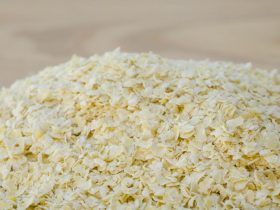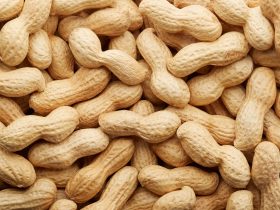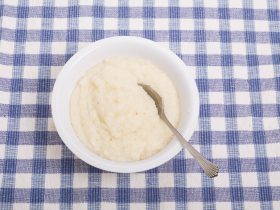Quiches are a type of French baked good usually consisting of a dairy and egg filling surrounded by pastry crust. The tops are most often left uncovered, allowing the filling to cook through properly.
Owing to how quickly dairy and eggs tend to spoil when left unpreserved1, it is important to keep in mind the exact length of time a quiche can last.
Quiches have highly variable shelf-lives depending on the exact ingredients used, however a reasonable baseline would be an approximate three hours without direct attempts at storage. This may be extended if the proper steps are taken.
What is the Ideal Temperature and Humidity to Store Quiches?
The effect cold and dry environments have on microorganisms is perfect for storage, as low enough temperatures and a lack of moisture can both slow down their reproduction and kill off any less-hardy species.
Knowing this, it was found that the ideal temperature to store dairy-and-egg-based products like quiches is around 40° F2, which conveniently is about the same temperature of most commercial refrigerators.
Keep in mind that the lower the temperature, the better the food is preserved, though this is not without its own drawbacks.

Another factor that affects the shelf-life of quiches is the relative humidity of the storage vessel or environment it is stored in.
Bacteria and fungi, like most all forms of life, require water to survive and reproduce. Owing to their microscopic size, even the miniscule amount of moisture present in the air is sufficient to allow them to propagate on your food.
This is why it is important to keep the relative humidity of your quiche storage environment around 65%. It is also advisable to remember that a humidity that is too low may affect the quality of the quiche, even if no microorganism growth is present.
How Long Can You Keep Quiche Out in the Open?
As most forms of bacteria and fungi prefer food rich in lipids and proteins, quiches act as the perfect bed for breeding of these microorganisms.
While bacteria and fungi consume your food at a microscopic level, they excrete various byproducts of their own biology, referred to by scientists as toxins. These toxins are what make spoiled food dangerous to consume for humans.
Knowing this, it should be clear that quiche will only last a matter of hours when left exposed to the open air. It is best to only allow quiches to stay unrefrigerated for up to three hours, as any longer will leave them potentially hazardous to eat.
How Long Can You Refrigerate a Quiche?
Once a quiche has been cooked and cooled, it is advisable to store any left-overs in the fridge to keep it edible for a longer period.
As quiches are complex mixes of various high protein ingredients, they will not last as long as other forms of food stored in the fridge. Within only three to four days, your quiche may begin to show signs of spoilage.
In order to ensure your quiche remains edible for the absolute maximum amount of time possible, it is best to store it in an air-tight container away from any sources of moving air within the fridge, such as a vent or fan.
How Long Does Quiche Last in the Freezer?
Unlike the relatively short amount of time a quiche will remain edible in the fridge, choosing to freeze it instead will allow it to stay shelf-stable for as long as four months, though this will require the use of appropriate storage techniques.
Freezing your quiche will undoubtedly reduce its quality both visually and texture-wise, as the crystallization of water within the filling will cause it to split and crack. The pastry dough will also lose much of its crunchiness, especially if exposed to too much excess air within the freezer.
How to Freeze a Quiche
In order to freeze your quiche, you will require a baking tray lined with wax parchment, plastic wrap, aluminum foil and a freezer capable of reaching 32° F or lower.
Shortly after baking, allow the quiche to cool for several minutes on the counter. This is to ensure that the filling is less likely to crack from the sudden drop in temperature as well as to reduce steam condensation within your freezer.
Once the quiche has cooled enough, place it on the parchment-lined baking sheet and place in the freezer for two hours uncovered. This is to allow the filling to freeze throughout its core, preventing uneven spots and sticking to the wrapping plastic.
After two hours have passed, remove the baking tray from the freezer. Wrap the quiche in a single layer of plastic wrap, ensuring that the plastic is pressed as closely as possible to the surface of the quiche. This is to reduce any excess air between the wrapping and the quiche.
Now wrapped in plastic, wrap the quiche once more, though this time with aluminum foil. Ensure that no sharp corners of the foil have pierced the plastic as this will reduce the quiches’ shelf life.
Having been wrapped twice, mark the date of storage on the aluminum foil with a marker and then place the quiche in the freezer for up to four months.
What Ingredients Make Quiche Spoil Faster?
As there are very few ingredients with a lower shelf life than milk and eggs, it is unlikely that any extra ingredients you have added will hasten the spoilage of your quiche.
Keep in mind that any cooked food will only last as long as its fastest expiring ingredient, and as such if you place longer-lasting ingredients in a quiche, it will still expire just as quickly as milk and eggs. This is because of the colonization of microorganisms, which spread across the food once a colony has been established.
How to Know if Quiche has Gone Bad
Even if you choose not to store your quiche, it is a wise idea to inspect it before consuming.
The primary signs of spoilage in a quiche are furry patches of mold or discolored dark spots along the filling. These indicate that fungal colonies have taken root in your quiche and that it should be disposed of immediately.
Apart from visual clues, it is also possible to smell if your quiche has gone bad. If any sour or sulfur-like odors are present, it is best to discard the entire quiche, as these indicate the toxin by-products of bacteria.
References:
1. Unknown Author. (July 2019) “What are the recommended storage times for egg products?” U.S. Department of Agriculture https://ask.usda.gov/s/article/What-are-the-recommended-storage-times-for-egg-products
2. Renee Boyer, Julie McKinney. (2013) “Food Storage Guidelines for Consumers” VirginiaTech University





Hi, I'm Dom
Dom Eats was started to help other people fall in love with food. While cooking can feel intimidating, it doesn't have to be.